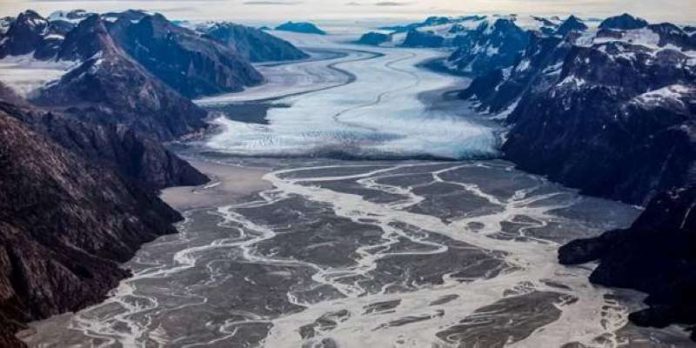The melting of ice in both the North and South Poles threatens the world, particularly to flood the coastal areas around the world, caused by climate change, and rising sea levels, but new research suggests a solution to this dangerous problem.
According to research published in the scientific journal Environmental Research Communications, refreezing the poles by reducing incoming sunlight would be economically viable, reports a local Arabic daily.
According to the scientists, high-altitude jets will spray microscopic aerosol particles into the atmosphere at latitudes 60 degrees north and south by pumping them at an altitude of 43,000 feet.
The particles will slowly drift toward the pole, shading the surface slightly below, and preventing sunlight from continuing to melt the ice.
“There is a fear about spreading aerosols to cool the planet, but if the risk-benefit equation is going to pay off anywhere, it will be at the poles,” said study lead author Wake Smith.
On the importance of this process, Smith added: “Aerosol injections treat the symptoms of climate change but not the underlying disease. It is aspirin, not penicillin, and it is not a substitute for decarbonization efforts.”
The same fleet of aircraft can serve both hemispheres, move to the opposite pole as the seasons change, and the particles are injected seasonally on spring and early summer days.
Existing military refueling tankers such as the KC-135 and A330 MMRT do not have enough payload at the required altitudes, and a fleet of 125 tankers can lift enough payload to cool the polar regions by 2°C per year, bringing them back close to average temperatures which it was before the industrial age.
According to the study, the costs are estimated at $11 billion annually, which is less than a third of the cost of cooling the entire planet by the same amount by 2°C and a fraction of the cost of reaching net zero emissions.
Cooling at the poles will provide direct protection for only a small part of the planet, although middle latitudes should also see some drop in temperature.
Because less than 1 percent of the world’s population lives in the target areas, any deliberate shift of the global temperature regulator would be of common interest to all of humanity, not just the Arctic and Patagonia.
The current study, according to its team, is only one small, initial step towards understanding the costs, benefits, and risks of undertaking climate intervention at high latitudes. The study provides additional reason to believe that such tools could be useful in maintaining the cryosphere near the poles and slowing sea level rise globally.

















